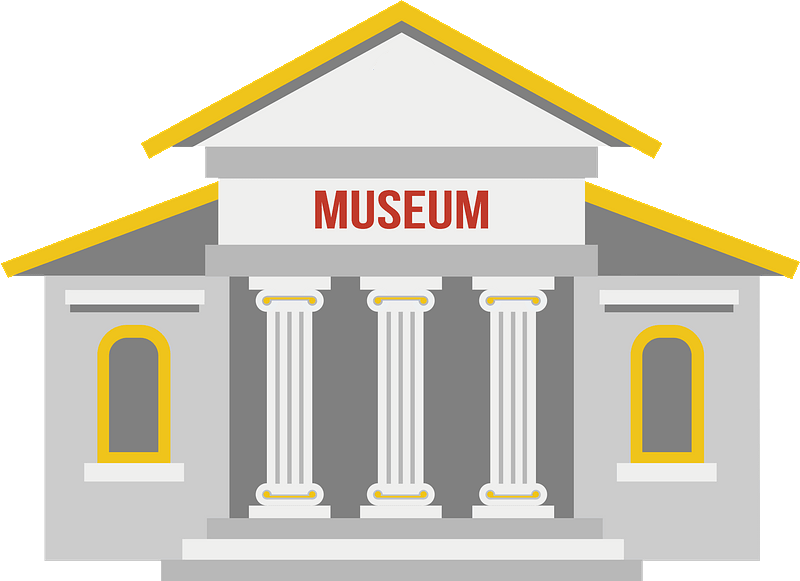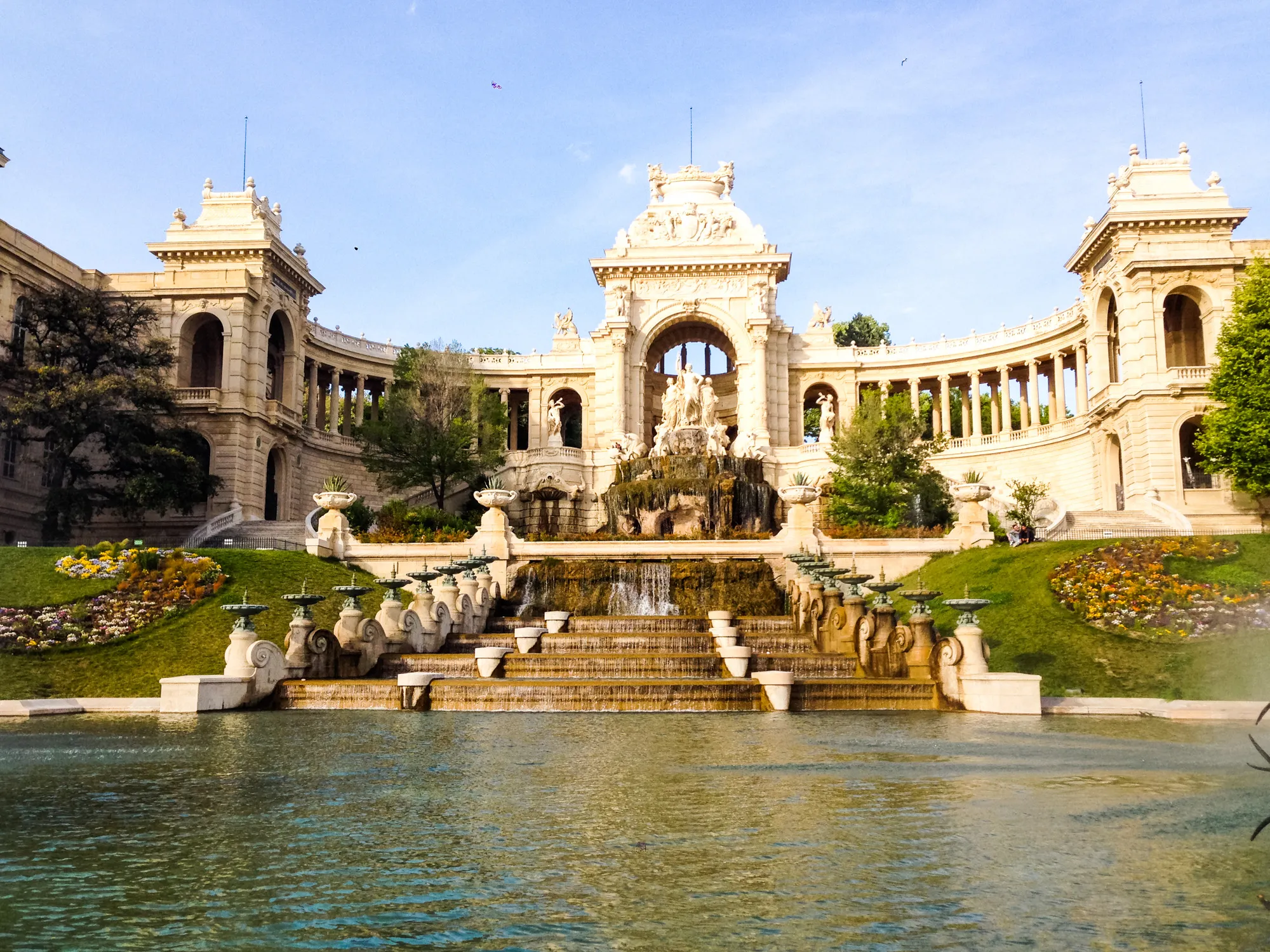
Deutsch-Chinesische Enzyklopädie, 德汉百科


 *Capitols in the United States
*Capitols in the United States
 *United States Political System
*United States Political System

 Architecture
Architecture
 Beaux Art
Beaux Art

 Kentucky-KY
Kentucky-KY
 United States
United States



 Architecture
Architecture
 Neoclassic architecture *
Neoclassic architecture *

 Art
Art
 Metropolitan Museum of Art
Metropolitan Museum of Art

 Museum
Museum

 New York-NY
New York-NY
 United States
United States

大都会艺术博物馆(英语:Metropolitan Museum of Art,昵称The Met)位于美国纽约州纽约市曼哈顿中央公园旁,是世界上最大的、参观人数最多的艺术博物馆之一。[4]主建筑物面积约有8公顷,展出面积有20多公顷。馆藏超过二百万件艺术品[5],整个博物馆被划分为十七个馆部。[6]主除了主馆外,还有位于曼哈顿上城区修道院博物馆的第二分馆。那里主要展出中世纪的艺术品。
在众多永久艺术收藏品中,包括许多出众的古典艺术品、古埃及艺术品、几乎所有欧洲大师的油画及大量美国视觉艺术和现代艺术作品。博物馆还收藏有大量的非洲、亚洲、大洋洲、拜占庭和伊斯兰艺术品。[7]博物馆同时也是世界乐器、服装、饰物、武器、盔甲的大总汇。[8] 博物馆的室内设计模仿不同历史时期的风格,从1世纪的罗马风格延续至现代美国。[9]
大都会艺术博物馆由一群美国公民于1870年发起构建。当时的发起人包括了商人、理财家、卓越的艺术家与思想家。他们期望博物馆能够给予美国公民有关艺术与艺术教育的熏陶。[10]最后大都会艺术博物馆于1872年2月20日开幕,当时的博物馆位于第五大道681号。在2007年时,大都会艺术博物馆已经有接近四分之一英里长及占地二百万平方英尺,是博物馆最初大小的二十倍。[11]
Das Metropolitan Museum of Art (Met) ist das größte Kunstmuseum der Vereinigten Staaten und besitzt eine der bedeutendsten kunsthistorischen Sammlungen der Welt. Das Hauptgebäude befindet sich an der Fifth Avenue und 82nd Street in der Upper East Side im Stadtteil Manhattan von New York City, am östlichen Rand des Central Park und ist Bestandteil der Museum Mile.
Es wurde am 13. April 1870 gegründet, am 20. Februar 1872 eröffnet und ist ein Universalmuseum mit dem Anspruch auf Vollständigkeit seiner Kunstsammlungsgebiete und -epochen. Der Sammlungsbestand umfasst mehr als drei Millionen Werke. In Wechselausstellungen werden die Exponate von Zeit zu Zeit ausgetauscht und auf über 130.000 m² Ausstellungsfläche präsentiert. 2016 hatte das Museum 7.006.859 Besucher und ist damit das am dritthäufigsten besuchte Kunstmuseum der Welt.[1]
Das Met hat drei Standorte. Neben dem Hauptgebäude am Central Park gibt es seit 1938 The Cloisters für mittelalterliche und kirchliche Kunst in Washington Heights und seit 2016 das Met Breuer für zeitgenössische Kunst an der Madison Avenue im ehemaligen Gebäude des Whitney Museums of American Art.
メトロポリタン美術館(メトロポリタンびじゅつかん、英: The Metropolitan Museum of Art、通称:The Met)は、アメリカ合衆国ニューヨーク市マンハッタンにある世界最大級の美術館。5番街(ミュージアム・マイルの区間)に面するセントラル・パークの東端に位置する。
The Metropolitan Museum of Art of New York City, colloquially "the Met",[a] is the largest art museum in the United States. With 7.3 million visitors to its three locations in 2016, it was the fourth most visited art museum in the world, and the fifth most visited museum of any kind.[8] Its permanent collection contains over two million works,[9] divided among seventeen curatorial departments. The main building, on the eastern edge of Central Park along Museum Mile in Manhattan 's Upper East Side is by area one of the world's largest art galleries. A much smaller second location, The Cloisters at Fort Tryon Park in Upper Manhattan, contains an extensive collection of art, architecture, and artifacts from Medieval Europe. On March 18, 2016, the museum opened the Met Breuer museum at Madison Avenue on the Upper East Side; it extends the museum's modern and contemporary art program.
The permanent collection consists of works of art from classical antiquity and ancient Egypt, paintings, and sculptures from nearly all the European masters, and an extensive collection of American and modern art. The Met maintains extensive holdings of African, Asian, Oceanian, Byzantine, and Islamic art. The museum is home to encyclopedic collections of musical instruments, costumes, and accessories, as well as antique weapons and armor from around the world. Several notable interiors, ranging from 1st-century Rome through modern American design, are installed in its galleries.
The Metropolitan Museum of Art was founded in 1870 for the purposes of opening a museum to bring art and art education to the American people. It opened on February 20, 1872, and was originally located at 681 Fifth Avenue.
Le Metropolitan Museum of Art de New York (aussi connu sous le nom abrégé de Met ) est l’un des plus grands musées d’art au monde. Ouvert au public depuis le 20 février 1872, il est situé dans l'arrondissement de Manhattan, du côté de Central Park sur la Cinquième avenue et à la hauteur de la 82e rue. Le musée comprend également un autre bâtiment, « The Cloisters » (les cloîtres), à l’extrémité nord de l’île, dans Fort Tryon Park (quartier de Washington Heights). Cette annexe présente des œuvres d’art médiéval et des reconstitutions de cloîtres européens. Les collections du Met comptent plus de deux millions d’œuvres d’art provenant du monde entier1 et représentant une gamme d’objets très divers. Les premières pièces furent apportées par les fondateurs puis des dons et des legs de grands collectionneurs ainsi que les diverses politiques d’acquisition menées par les directeurs successifs. Les visiteurs peuvent ainsi admirer des trésors de l’Antiquité, tels que ceux exposés dans ses galeries grecques et chypriotes, en passant par des toiles et des sculptures de tous les grands maîtres européens, jusqu’à une large collection d’art américain. Les collections sont aussi composées d’œuvres égyptiennes, africaines, asiatiques, océaniennes, moyen-orientales, byzantines et islamiques2.
Une collection encyclopédique d’instruments de musique du monde entier peut aussi être admirée ainsi qu’une série d’intérieurs, comme une chambre romaine du Ier siècle av. J.-C. ou une pièce dessinée par l’architecte américain Frank Lloyd Wright3. Il faut également mentionner sa collection d’armes et d’armures antiques d’Europe, mais aussi du Japon, des États-Unis et du Moyen-Orient4.
Il Metropolitan Museum of Art, a cui spesso ci si riferisce con il nomignolo di "The Met", è uno dei più grandi ed importanti musei degli Stati Uniti. La sua sede principale si trova sul lato orientale del Central Park a New York, lungo quello che viene chiamato il Museum Mile (cioè il "Miglio dei musei"). Nel 1986 è stato inserito nella lista dei National Historic Landmark.[1][2][3] Il Met dispone anche di una sede secondaria, chiamata The Cloisters, dedicata interamente all'arte medievale.
La collezione permanente del Met contiene più di due milioni di opere d'arte, suddivise in diciannove sezioni.[4]
Sono permanentemente esposte opere risalenti all'antichità classica e all'antico Egitto, dipinti e sculture di quasi tutti i più grandi maestri Europei, e una vasta collezione di arte statunitense e moderna. Il Met possiede anche una notevole quantità di opere d'arte africane, asiatiche, dell'Oceania, bizantine e islamiche.[5]
Il museo ospita anche delle collezioni enciclopediche di strumenti musicali, abiti e accessori d'epoca e armi ed armature antiche provenienti da tutto il mondo.[6]
Nelle gallerie del museo sono sempre esposti importanti ricostruzioni d'interni, che spaziano dalla Roma del I secolo al moderno design statunitense.[7]
Oltre all'esposizione permanente, il Met organizza ed ospita grandi mostre itineranti per tutto il corso dell'anno.[8]
El Museo Metropolitano de Arte (en inglés: Metropolitan Museum of Art o simplemente Met) es uno de los museos de arte más destacados del mundo. Situado en el distrito de Manhattan, en la ciudad de Nueva York, abrió sus puertas el 20 de febrero de 1872.
La colección del museo es de más de dos millones de obras de arte de todo el mundo. Las colecciones abarcan desde tesoros de la antigüedad clásica, representada en sus galerías de Grecia y Chipre, hasta pinturas y esculturas de casi todos los maestros de Europa, y una gran colección de obras estadounidenses. Se exponen obras maestras de Rafael, Tiziano, el Greco, Rembrandt, Velázquez, Picasso, Pollock, Braque y muchos más.
El museo posee un gran acervo de arte egipcio, africano, asiático, de Oceanía, Oriente Medio, bizantino e islámico.
Las galerías André Meyer encierran grandes obras de arte europeo del siglo XIX, con particular énfasis en los pintores impresionistas y post-impresionistas, así como una gran colección de esculturas de Rodin.
Метропόлитен-музей (англ. The Metropolitan Museum of Art) — один из крупнейших и четвёртый по посещаемости[1] художественный музей мира. Расположен в Нью-Йорке, США. Музей существует на средства спонсоров и дарителей при небольшой государственной поддержке.
 *Capitols in the United States
*Capitols in the United States
 *United States Political System
*United States Political System

 Architecture
Architecture
 Neo-Renaissance architecture
Neo-Renaissance architecture

 Architecture
Architecture
 Beaux Art
Beaux Art

 Minnesota-MN
Minnesota-MN
 United States
United States

 *Capitols in the United States
*Capitols in the United States
 *United States Political System
*United States Political System

 Architecture
Architecture
 Beaux Art
Beaux Art

 Mississippi-MS
Mississippi-MS
 United States
United States


奥赛博物馆(又译奥塞博物馆、奥塞美术馆;法语:Musée d'Orsay)是法国巴黎的近代国家艺术博物馆,主要收藏可追溯至1848年到1914年间的法国绘画、雕塑、家具和摄影作品。收藏近代艺术品4700多件,其中该博物馆则收藏世界上最多的印象派和后印象派作品,以及著名的象征主义、现实主义和学院艺术,博物馆位于塞纳河左岸,和卢浮宫斜对,隔河和杜伊勒里公园相对。
Das Musée d’Orsay ist ein Kunstmuseum im 7. Arrondissement von Paris. Es liegt am südlichen Ufer der Seine gegenüber dem Tuileriengarten. Das Gebäude war ursprünglich ein Bahnhof: der Gare d’Orsay. Er war anlässlich der Weltausstellung des Jahres 1900 von Victor Laloux erbaut worden und wurde bis 1939 für den Fernverkehr in den Südwesten Frankreichs genutzt. Die Entscheidung, den Bahnhof in ein Museum umzuwandeln, fiel 1977 infolge einer Initiative des französischen Präsidenten Valéry Giscard d’Estaing. Der Umbau wurde von dem Architekturbüro ACT Architecture geleitet, bis das Musée d’Orsay 1986 eröffnet wurde.
Im Musée d’Orsay werden auf 16.000 Quadratmetern mehr als 4000 Exponate gezeigt. Die Gemälde, Skulpturen, Grafiken, Fotografien, Werke des Kunsthandwerks und Designs sowie der Architektur stammen bis auf wenige Ausnahmen aus dem Zeitraum zwischen 1848 und 1914. Zwischen der Einweihung im Dezember 1986 und dem Dezember 2005 besuchten über 51 Millionen Menschen das Musée d’Orsay.[1] Mit jährlich etwa 3,8 Millionen Besuchern gehört das Museum zu den Attraktionen der Stadt Paris.



 Architecture
Architecture
 Neoclassic architecture *
Neoclassic architecture *

 Architecture
Architecture
 Neo-Baroque architecture
Neo-Baroque architecture

 Architecture
Architecture
 Beaux Art
Beaux Art

 Performing Arts
Performing Arts
 France
France

 Ile-de-France
Ile-de-France

 Music
Music

 Music
Music
 Gesang
Gesang

 Music
Music
 Opera
Opera

 Ballet
Ballet



加尼叶歌剧院(法语:Opéra Garnier),通常称为巴黎歌剧院(法语:Opéra de Paris),于1861至1875年间建造,位于法国巴黎第九区,是一座拥有1979个座位的歌剧院。巴黎歌剧院是一座新巴洛克风格的建筑,由法国建筑师查尔斯·加尼叶(Charles Garnier)所设计,被认为是新巴洛克式建筑的典范之一。
在1989年坐落于巴士底广场的巴士底歌剧院落成前,加尼叶歌剧院是巴黎歌剧团的首选剧场。如今,加尼叶歌剧院多上演芭蕾舞剧目。
巴黎歌剧院与巴黎圣母院、卢浮宫以及圣心教堂被并称为巴黎的标志。
Die Opéra Garnier, auch Palais Garnier genannt, ist eines der zwei Pariser Opernhäuser, die der staatlichen Institution Opéra National de Paris unterstehen (Das zweite ist die Opéra-Comique). Die Opéra Garnier wurde 1875 eröffnet und steht am rechten Seineufer im 9. Arrondissement. Ihren Namen verdankt sie ihrem Erbauer Charles Garnier. Seit der Eröffnung der Opéra Bastille im Jahre 1989 wird die Opéra Garnier hauptsächlich für Ballettaufführungen des hauseigenen Ballettensembles Ballet de l’Opéra de Paris genutzt, führt aber nach wie vor auch klassische Opern auf.
ガルニエ宮(Palais Garnier)は、フランスの首都パリにある歌劇場である。単にオペラ座(l'Opéra)と呼ばれることもある。パリ国立オペラの公演会場の一つである。
フランスの王立オペラの歴史は1669年にさかのぼる。作曲家ロベール・カンベール(Robert Cambert)と組んで宮廷オペラを作っていた詩人ピエール・ペラン(Pierre Perrin)の請願が、財務総監コルベールの仲立ちでルイ14世に許可され、『音楽アカデミー』ができたのである。この名称は時代とともに、政治体制とともに変わった[1]。
パリの王立ないし国立のオペラ劇団が公演する劇場も転々と変わり、ガルニエ宮は13代目である。それまでの劇場は、ルーヴル美術館(フランス革命までは『ルーヴル宮』)の中や隣だったことも、約1.5km離れていたこともあった[2]。
1800年12月、第一統領だったナポレオン・ボナパルトが爆弾に見舞われたのは、8代目のテアトル・デ・ザール(Théâtre des Arts)への途次であった。1858年1月14日、ナポレオン3世が爆弾を投げられたのは、11代目のサル・ル・ペルティエ(Salle Le Peletier)の正面であった。これを機に、以前からの新オペラ座建設計画が1860年9月29日の政令で具体化し、同年12月29日、ナポレオン3世の第二帝政を称える記念碑的建造物の設計が公募された。
折から、セーヌ県知事オスマンのパリ市街区の整理再構築(パリ改造)が進行中で、建設用地は取り払われ空き地となる現在地と決まっていた。
171の応募の中に一等賞はなく、佳作が6件であった。その中からシャルル・ガルニエの案が採択され[3]、1862年7月21日に最初の礎石が置かれた。
1874年12月に工事を終え、1875年1月5日に落成式が行われた。この劇場は設計者の名から「ガルニエ宮」と呼ばれることとなった。
着工から完成までの十余年間のフランスには、1867年のメキシコ出兵の失敗、1870年の普仏戦争の敗戦とナポレオン3世の亡命(翌年没)、1871年のパリ・コミューンと第三共和政の発足などの大事件が多く、新劇場の工事を休むこともあった。
外観および内装はネオ・バロック様式の典型と言われ、たくさんの彫刻を飾り、華美な装飾を施した豪華絢爛たるものである。また建材には当時、最新の素材とされていた鉄を使用した。これによって、従来不可能とされていた巨大な空間を確保することに成功した。2167の座席が5階に配分されており、観客収容規模でも当時最大の劇場であった。
なお、ガルニエ宮正面からパレ・ロワイヤルへ直に南下するオペラ座大通り(Avenue de l'Opéra)は、この建設工事の一環として開かれた。
第二次世界大戦中のドイツ軍の占領下では、ドイツ軍の管理下で営業を続けた。1964年以降、劇場の天井画はマルク・シャガールによるものが飾られて、現代的な新味も盛り込まれている。
1989年には新しいオペラ劇場としてオペラ・バスティーユ(Opéra Bastille)が完成し、以来ガルニエ宮では、バレエと小規模オペラ、管弦楽コンサートを中心とした運用が行われている。
The Palais Garnier (pronounced [palɛ ɡaʁnje] French ![]() (help·info)) is a 1,979-seat opera house, which was built from 1861 to 1875 for the Paris Opera. It was called the Salle des Capucines, because of its location on the Boulevard des Capucines in the 9th arrondissement of Paris, but soon became known as the Palais Garnier, in recognition of its opulence and its architect, Charles Garnier. The theatre is also often referred to as the Opéra Garnier (French
(help·info)) is a 1,979-seat opera house, which was built from 1861 to 1875 for the Paris Opera. It was called the Salle des Capucines, because of its location on the Boulevard des Capucines in the 9th arrondissement of Paris, but soon became known as the Palais Garnier, in recognition of its opulence and its architect, Charles Garnier. The theatre is also often referred to as the Opéra Garnier (French ![]() (help·info)) and historically was known as the Opéra de Paris or simply the Opéra,[7] as it was the primary home of the Paris Opera and its associated Paris Opera Ballet until 1989, when the Opéra Bastille opened at the Place de la Bastille.[8] The Paris Opera now mainly uses the Palais Garnier for ballet.
(help·info)) and historically was known as the Opéra de Paris or simply the Opéra,[7] as it was the primary home of the Paris Opera and its associated Paris Opera Ballet until 1989, when the Opéra Bastille opened at the Place de la Bastille.[8] The Paris Opera now mainly uses the Palais Garnier for ballet.
The Palais Garnier has been called "probably the most famous opera house in the world, a symbol of Paris like Notre Dame Cathedral, the Louvre, or the Sacré Coeur Basilica."[9] This is at least partly due to its use as the setting for Gaston Leroux's 1910 novel The Phantom of the Opera and, especially, the novel's subsequent adaptations in films and the popular 1986 musical.[9] Another contributing factor is that among the buildings constructed in Paris during the Second Empire, besides being the most expensive,[10] it has been described as the only one that is "unquestionably a masterpiece of the first rank."[11] This opinion is far from unanimous however: the 20th-century French architect Le Corbusier once described it as "a lying art" and contended that the "Garnier movement is a décor of the grave".[12]
The Palais Garnier also houses the Bibliothèque-Musée de l'Opéra de Paris (Paris Opera Library-Museum), although the Library-Museum is no longer managed by the Opera and is part of the Bibliothèque Nationale de France.[13] The museum is included in unaccompanied tours of the Palais Garnier.[14]
L’opéra Garniera, ou palais Garniera, est un théâtre national à vocation lyrique et chorégraphique dont l'édifice est structurant dans le 9e arrondissement de Paris et dans le paysage de la capitale française. Il est situé place de l'Opéra, à l'extrémité nord de l'avenue de l'Opéra et au carrefour de nombreuses voiesb. Il est accessible par le métro (station Opéra), par le RER (ligne A, gare d'Auber) et par le bus. L'édifice s'impose comme un monument particulièrement représentatif de l'architecture éclectique et du style historiciste de la seconde moitié du XIXe siècle. Sur une conception de l’architecte Charles Garnier retenue à la suite d’un concours, sa construction, décidée par Napoléon III dans le cadre des transformations de Paris menées par le préfet Haussmann et interrompue par la guerre de 1870, fut reprise au début de la Troisième République, après la destruction par incendie de l’opéra Le Peletier en 1873. Le bâtiment est inauguré le 5 janvier 1875 par le président Mac Mahon sous la IIIe République.
Cet opéra a été appelé « opéra de Paris » jusqu'en 1989, date à laquelle l'ouverture de l'opéra Bastille, également opéra de Paris, a influé sur son appellation. On le désigne désormais par le seul nom de son architecte: « opéra Garnier » ou « palais Garnier ». Les deux opéras sont aujourd'hui regroupés au sein de l'établissement public à caractère industriel et commercial « Opéra national de Paris », institution publique française dont la mission est de mettre en œuvre la représentation de spectacles lyriques ou de ballet, de haute qualité artistique. L'opéra Garnier fait l’objet d’un classement au titre des monuments historiques depuis le 16 octobre 1923.
L'Opéra Garnier, o Palais Garnier, è un teatro situato nel IX arrondissement di Parigi, facente parte de l'Opéra national de Paris.
Dal 16 ottobre 1923 è monumento storico di Francia.
La Ópera Garnier, también conocida como Palacio Garnier u Ópera de París, es uno de los edificios más característicos del XIX Distrito de París y del paisaje urbano de la capital francesa. Napoleón III ordenó su construcción al arquitecto Charles Garnier, quien lo diseñó en Estilo Imperio.
Desde su inauguración en 1875, la ópera fue llamada oficialmente Academia Nacional de Música-Teatro de la Ópera. Conservó su título hasta 1978, cuando fue renombrada Teatro Nacional de la Ópera de París. En 1989 la Compañía de la Ópera trasladó su sede al recién construido Teatro de la Bastilla y su vieja sede recibió el nombre de Palacio Garnier, donde permanece la Academia Nacional de Música. A pesar del cambio de nombre oficial y del traslado de la Compañía de la Ópera, el Palacio Garnier sigue siendo conocido popularmente por el nombre de Ópera de Garnier en París.
Пари́жская о́пера (фр. Opéra de Paris), то же, что Гранд-опера́ (Гранд-Опера́[1]; фр. Grand Opéra), в современной Франции известна как Опера́ Гарнье́ (фр. Opéra Garnier) — театр в Париже, один из самых известных и значимых театров оперы и балета мира.
Расположена во дворце Гарнье (Palais Garnier) в IX округе Парижа, в конце проспекта Оперы (avenue de l’Opéra), около одноимённой станции метро. Здание считается эталоном эклектической архитектуры в стиле боз-ар и относится к эпохе крупных преобразований города, воплощённых Наполеоном III и префектом Османом.
Долгое время здание театра именовалось Парижской оперой, но после открытия в 1989 году второй театральной площадки для Парижской национальной оперы — Оперы Бастилии, его стали называть именем архитектора Шарля Гарнье. Оба учреждения объединены в общественно-коммерческое предприятие «Парижская национальная опера» (Opéra national de Paris).

 Religion
Religion
 Rhode Island-RI
Rhode Island-RI
 Pays-de-la-Loire
Pays-de-la-Loire
 Provence-Alpes-Côte d´Azur
Provence-Alpes-Côte d´Azur